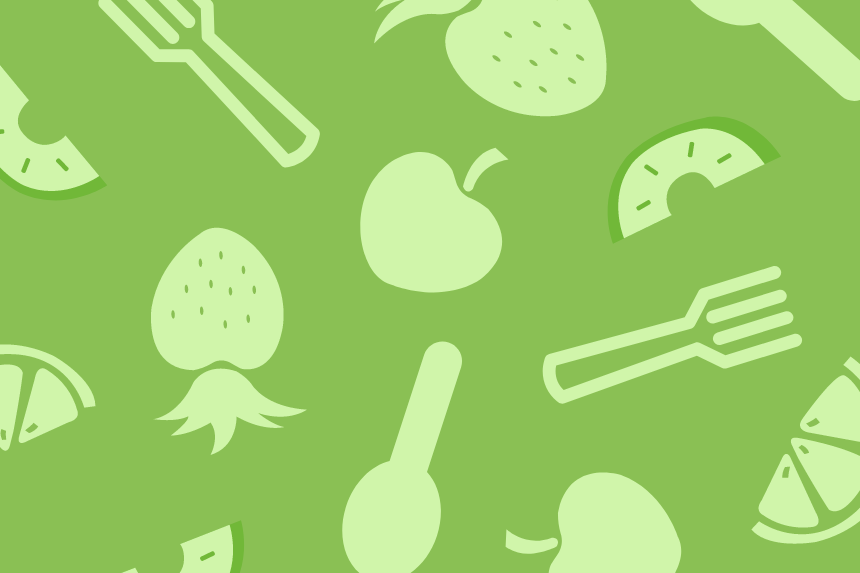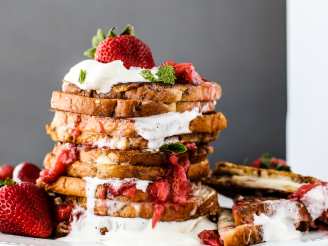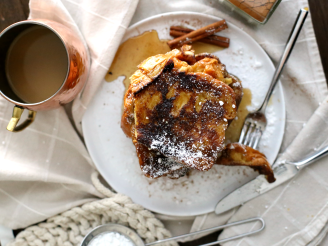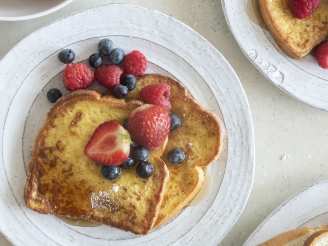French Toast

- Ready In:
- 25mins
- Ingredients:
- 6
- Serves:
-
3
ingredients
- 3 slices stale homemade-quality sandwich bread, 1 inch thick
- 1 1⁄2 inches vanilla beans
- 1 tablespoon sugar
- scant 1/2 cup heavy cream
- 4 teaspoons Grand Marnier
- 2 eggs, at room temperature
directions
- A day in advance, slice the crusts off the bread, cut each slice in half diagonally, and let them dry on a rack while you prepare the other ingredients.
- If your vanilla bean isn't 1/4 inches thick, moist, and full of seeds, use a longer piece. Preferably, pound the bean to shreds with the sugar in a mortar and pestle -- otherwise, cut it up in small bits. Combine everything in a blender at low speed, further chopping the bean fragments.
- Arrange the bread slices in a single layer in a tightly-closeable container just large enough to hold them (about 8 x 6 inches). Strain the liquid over them, pressing hard to squeeze everything out of the bits of vanilla bean. Let stand at room temperature until most of the liquid is absorbed, then drain off the rest into a cup and pour it slowly back over the bread. Refrigerate overnight; it will keep for several days.
- At serving time, pan-fry 2 slices per serving in 1 teaspoon butter, starting on medium heat and turning the burner down so the slices cook through slowly to a rich golden brown; for the second side, the burner should be on low. Serve with maple syrup, a berry puree, or even simply a sprinkle of powdered sugar.
Questions & Replies
Got a question?
Share it with the community!
Reviews
Have any thoughts about this recipe?
Share it with the community!
RECIPE SUBMITTED BY
I am a New York City attorney with over 40 years' serious-amateur cooking experience. My cooking is the antithesis of Mediterranean cuisine: I generally want a blended richness rather than a light freshness (a Strauss tone poem instead of a Telemann concerto, or cooking down jams instead of using liquid pectin). I value basic quality ingredients like vanilla beans or good butter, but have little use for such "in" things as brining, food processors, sun-dried tomatoes, or chichi chocolates that taste weird. I think Americans' tastes are being corrupted by a gross overuse of salt and lemon juice in recipes for just about everything. My favorite cooking is classic French cuisine, but I try to learn how to cook for myself any dish I've eaten that I want to be sure of having again in the future. Among my favorite cookbooks are Escoffier's "Le Guide Culinaire" in French, and Jacques Pepin's two early books on technique and method. (As for "Mastering the Art of French Cooking," it was a landmark when it appeared in 1961, and many of its recipes are still hard to beat; but a half century's experience has uncovered enough errors and misinformation to make it no longer as trustworthy as we all once thought.) Like any other repetitive activity, the actual mechanics of cooking can sometimes be a chore -- but the joy of eating the finished product remains undiminished!




